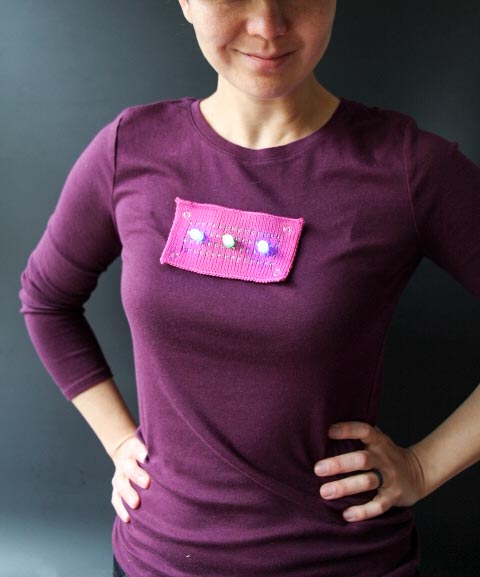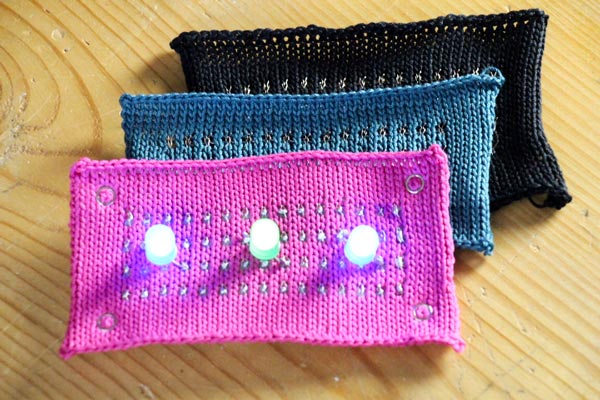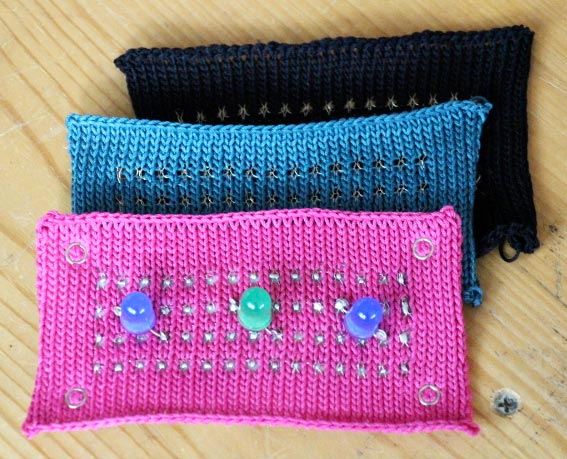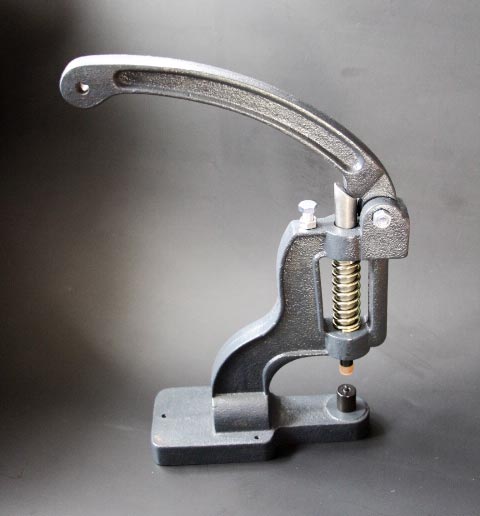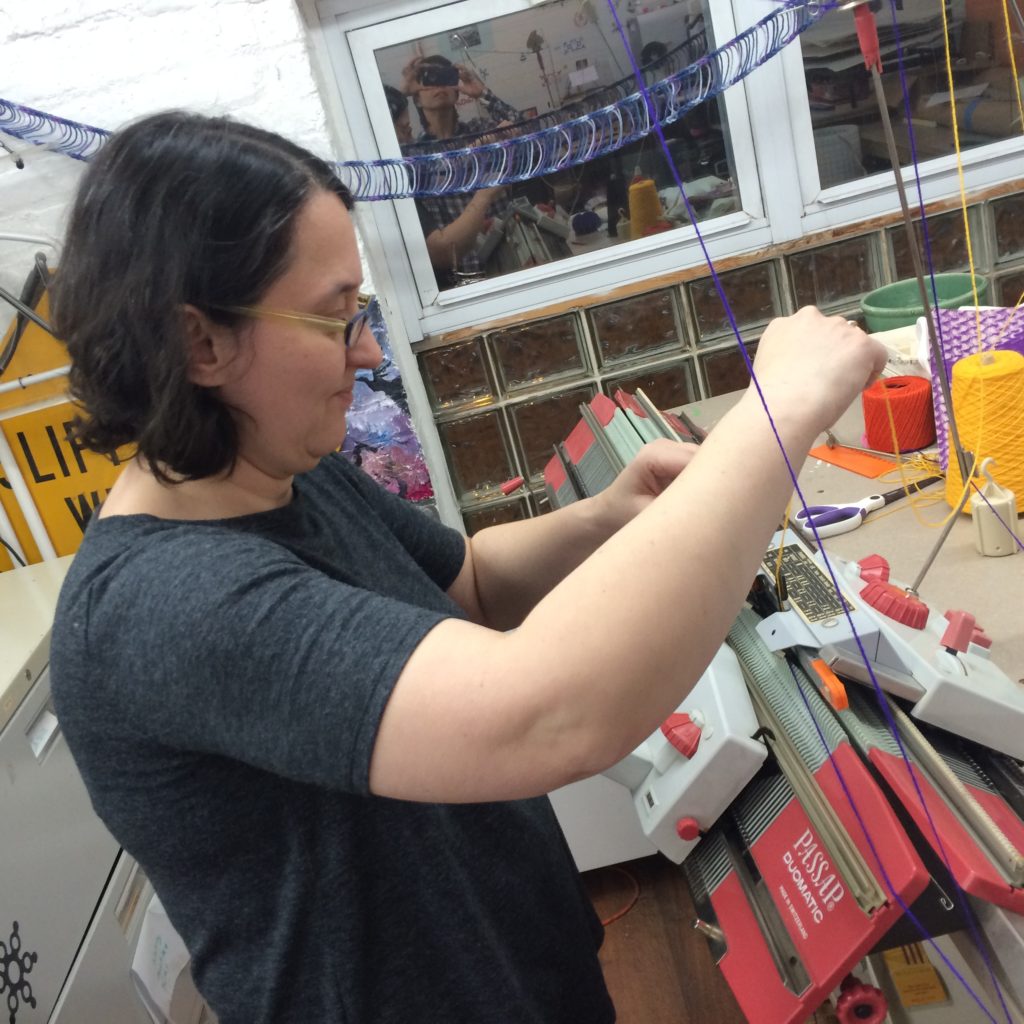I made these knitted sleeves from a conductive yarn that changes resistance as the knit is stretched.
Jenna Boyles, Kyle Werle, and Christine Shallenberg beta-tested the sensors at Pumping Station: One. They selected sleeves for fit, then stitched on the wires themselves. Kyle and Christine were able to use the sensors to control an analog synth and a processing sketch.
Knitted Finger Sensor from Jesse Seay on Vimeo.
With this project, I wanted to design a glove that could be machine-knit for workshops cheaply and quickly, making a wearable bend sensor available to people with no textile skills.
I decided to go with a modular approach (individual sleeves instead of single glove) because:
- gloves are not easy to knit by machine
- fit is important, as the tightness of the knit impacts the resistance. The tighter it is, the lower the resistance.
- there is no one-size-fits-all with gloves. individuals with the same hand width might have very differently-sized digits
With a range of sleeve sizes, users can select the sleeve with the best fit and resistance range for each digit. We attach flexible silicone wires by means of a snap press, and the wearer then sews the wire in place with a tapestry needle and yarn -- very easy! Transferring the sewing to the end-user means I can produce a batch of these more quickly for a workshop. Once the sleeve is finished, the user can use the tapestry needle to easily sew the wire leads in place along a fingerless glove.
Resistance varies by user. Everyone could reduce the
resistance to less than 100 Ohms by curling up their finger. We were
generally able to get a maximum resistance of at least 5k with a tight
fit, to 20k or 30k for a more comfortable fit. The shorter the sleeve,
the lower the highest possible resistance. Longer sleeves had much more
range.
The sleeves are knit on a Super S48 double bed machine. Both beds are at tension 10, with a bed gap of 4. The sleeves are circular knit, with cast on/cast off using waste yarn, then finished by hand stitching. The sleeves should cover most of the finger, but are not intended to cover the fingertips.
Sizing:
Sizing has been a challenge with this project and it took some experimenting to get a useful range of sizes. For workshops, I need to be able to knit sleeves of the appropriate size ahead of time, based on a single hand measurement submitted by a participant.
I tested the sleeves for fit and resistance on a dozen volunteers at
Pumping Station: One. From that, I created a sizing chart, in order to offer a range of sizes, based on hand circumference.
Read more »



